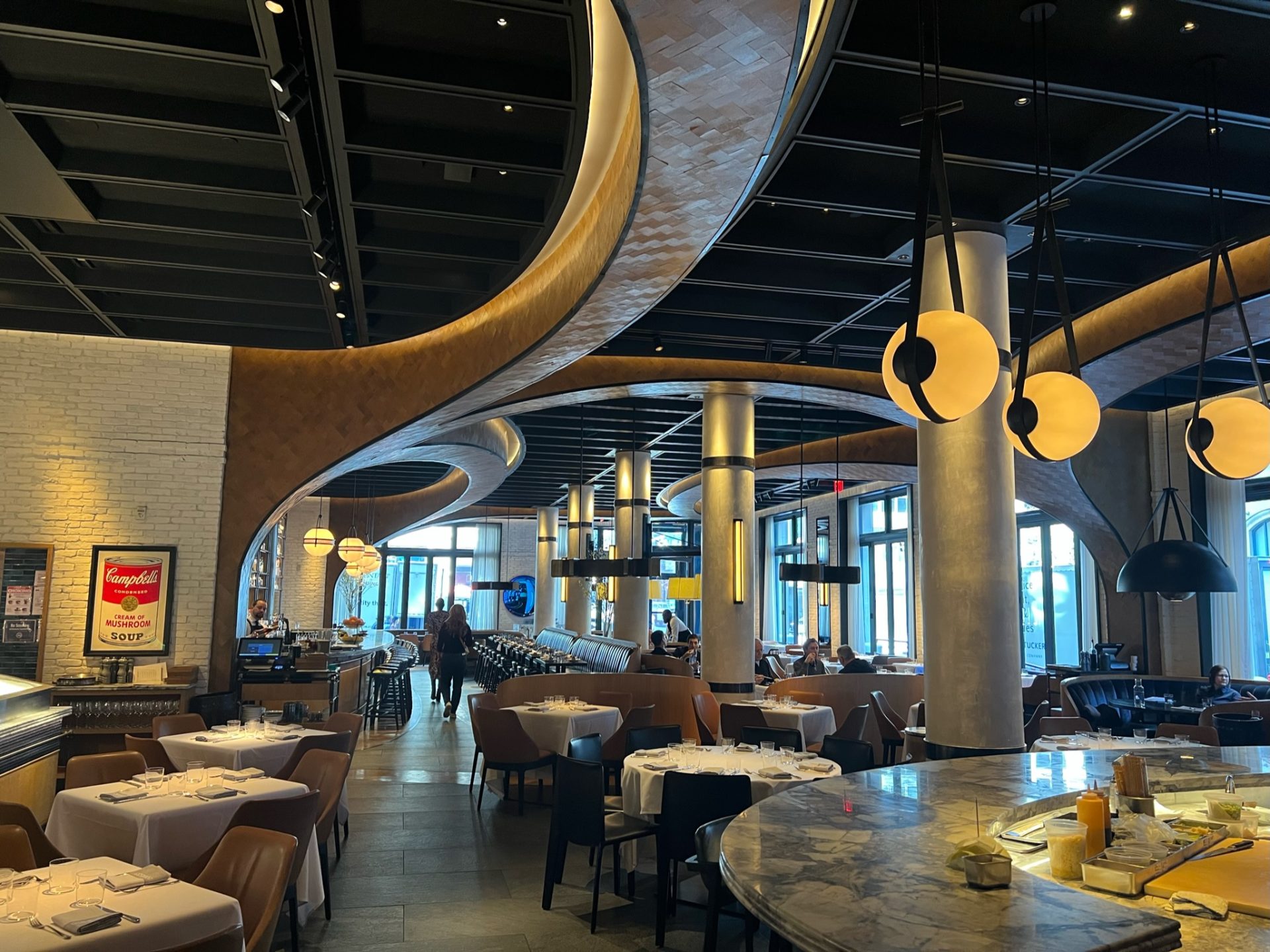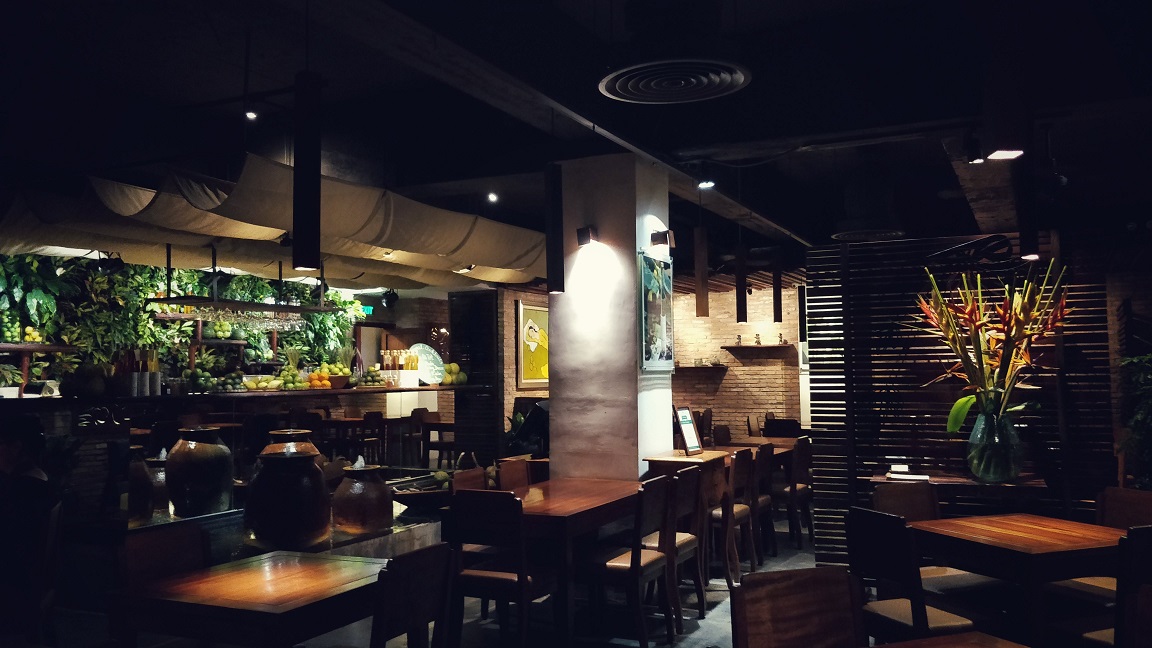Best Asian Restaurant Islamabad: Experience Tastes from Across Asia
Wiki Article
Savor Authentic Asian Food With a Pan-Asian Spin for a Cooking Experience
Embarking on a culinary journey with authentic Eastern food, enhanced with a Pan-Asian twist, offers a special possibility to check out the abundant tapestry of tastes that specify the region's diverse cooking practices. This experience invites you to savor the charming balance of preferences-- pleasant, salted, spicy, and sour-- integrated by fragrant natural herbs and flavors. Envision the ingenious blend of Thai curry and ramen or the unanticipated delight of sushi burritos. As you contemplate these tempting recipes, consider the cultural narratives and historic influences that shape them, each bite offering a story waiting to be found.
Discovering Pan-Asian Flavors
In the world of global gastronomy, Pan-Asian food sticks out for its impressive diversity and the harmonious interplay of tastes from numerous Eastern societies. This culinary strategy commemorates the rich traditions and distinct components discovered throughout the continent, producing a tapestry of tastes that is both interesting and rewarding. Secret to Pan-Asian food is its ability to stabilize different flavors-- sweet, salty, spicy, and sour-- while highlighting the quality and high quality of each component.From the umami-rich soy sauce of Japan to the fiery chili peppers of Thailand, Pan-Asian cuisine supplies a comprehensive combination of tastes. These aspects are often combined in creative means, enhancing recipes with layers of complexity. For circumstances, the usage of fragrant herbs such as lemongrass and cilantro, usual in Vietnamese and Thai food, includes a refreshing illumination to dishes, while the incorporation of coconut milk supplies a luscious, rich texture.
The emphasis on fresh produce and aromatic spices ensures that each dish is not only a banquet for the taste yet likewise for the senses. Pan-Asian food invites diners to start a cooking trip, exploring the substantial and varied landscapes of Asian gastronomy with every bite.
Blend Meals to Attempt
While Pan-Asian cuisine is celebrated for its typical tastes, the modern-day culinary landscape is significantly embracing fusion meals that mix these timeless aspects with impacts from various other areas. This ingenious strategy not just honors the abundant heritage of Eastern cookeries however also presents unique taste experiences that appeal to modern tastes buds.
An archetype of such a combination meal is the Korean-Mexican taco, where marinaded bulgogi beef is wrapped in a warm tortilla, covered with kimchi and a hot gochujang-infused salsa. This mix weds the bold, mouthwatering flavors of Korea with the vivid, fresh components of Mexican food. Likewise, sushi burritos have acquired appeal, amalgamating the delicate creativity of Japanese sushi with the passionate, hand-held benefit of a burrito, usually featuring combination ingredients like tempura shrimp and avocado with a drizzle of wasabi mayo.
An additional notable dish is Thai curry ramen, which infuses the velvety, aromatic flavors of Thai curry into the reassuring broth of conventional Japanese ramen, creating a harmonious blend that entices the senses. These combination meals extend beyond mere novelty; they stand for a cooking dialogue in between cultures, encouraging expedition and innovation worldwide of Pan-Asian cuisine.
Necessary Components and Spices
To really appreciate Pan-Asian food, one should recognize the essential active ingredients and flavors that form its structure. This varied cooking style attracts from a rich tapestry of Asian practices, using an unified mix of structures and flavors.Fragrant aspects are pivotal, with lemongrass, garlic, and ginger being common throughout various Pan-Asian dishes. These ingredients supply an aromatic base that enhances the complexity of tastes. Spices such as star anise, cardamom, and cinnamon present heat and personality, echoing influences from areas like China and India.

Food Preparation Methods and Tips
Understanding the art of Pan-Asian food calls for knowledge with its distinctive food preparation strategies, each adding to the vivid tapestry of tastes this cooking custom is commemorated for. Central to these techniques is the stir-fry, a fast cooking technique that protects the dietary stability and brilliant shades asian fusion restaurant of active ingredients. Utilizing a frying pan, the stir-fry technique enables even warmth circulation, essential for achieving the particular appearance and taste balance of Pan-Asian dishes.An additional basic method is steaming, especially prevalent in Chinese food. This mild technique maintains the all-natural flavors and nutrients of ingredients, making it perfect for seafood and veggies. Dumplings, a cherished staple, typically gain from steaming, resulting in soft, delicious structures.
Grilling, additionally indispensable, gives smoky midsts to meals such as Korean bulgogi or Japanese yakitori (Chinese food Islamabad). This strategy commonly involves seasoning components, permitting flavors to pass through deeply before food preparation over an open flame or warm plate
Lastly, understanding the art of balancing tastes-- sweet, sour, salted, bitter, and umami-- is essential. Effectively layering these aspects can boost a dish from normal to extraordinary, using a complex and satisfying cooking experience that embodies the significance of Pan-Asian food.
Dining Experiences Worldwide
Throughout the world, Pan-Asian cuisine uses an exceptional eating experience, celebrated for its rich tapestry of tastes and vibrant discussions. This cooking phenomenon has gone beyond social boundaries, catching the hearts and tastes of food enthusiasts worldwide. In multicultural cities fresh York, London, and Sydney, Pan-Asian restaurants serve as fusions where cooking traditions from Thailand, Japan, China, and past merge, offering diners with a diverse mix of recipes that highlight the area's variety.The global charm of Pan-Asian food depends on its capacity to supply both credibility and innovation. Chefs masterfully wed standard components such as lemongrass, soy sauce, and miso with contemporary techniques, resulting in dishes that are both acquainted and refreshingly brand-new. This fusion allows restaurants to start a cooking journey that respects heritage while welcoming modernity.
In addition, eating experiences are raised through attentively made atmospheres that reflect the ethos of Pan-Asian aesthetic appeals. From minimalist Japanese-inspired insides to vibrant Thai-themed spaces, each restaurant uses a distinct ambiance that complements the cooking offerings. As an outcome, customers are not merely eating a meal but partaking in a social experience, making Pan-Asian dining a really global sensation.
Conclusion
The expedition of Pan-Asian cuisine supplies a profound understanding of the intricate interaction of flavors and cooking traditions throughout Asia. By embracing blend meals such as Thai curry ramen and sushi burritos, the cooking journey not just highlights the versatility of traditional active ingredients however also showcases cutting-edge modern-day methods. This gastronomic experience, enriched by cooking methods and vital spices, gives a distinct chance to appreciate the social diversity and culinary artistry that specify Pan-Asian cuisine on an international scale.Beginning on a cooking journey with genuine Asian cuisine, improved with a Pan-Asian twist, provides an one-of-a-kind opportunity to check out the abundant tapestry of flavors that define the region's varied cooking customs.In the world of international gastronomy, Pan-Asian food stands out for its amazing variety and the unified interplay of flavors from different Oriental societies. Trick to Pan-Asian cuisine is its capability to stabilize different tastes-- sweet, salty, spicy, and sour-- while highlighting the freshness and high quality of each active ingredient.

Report this wiki page